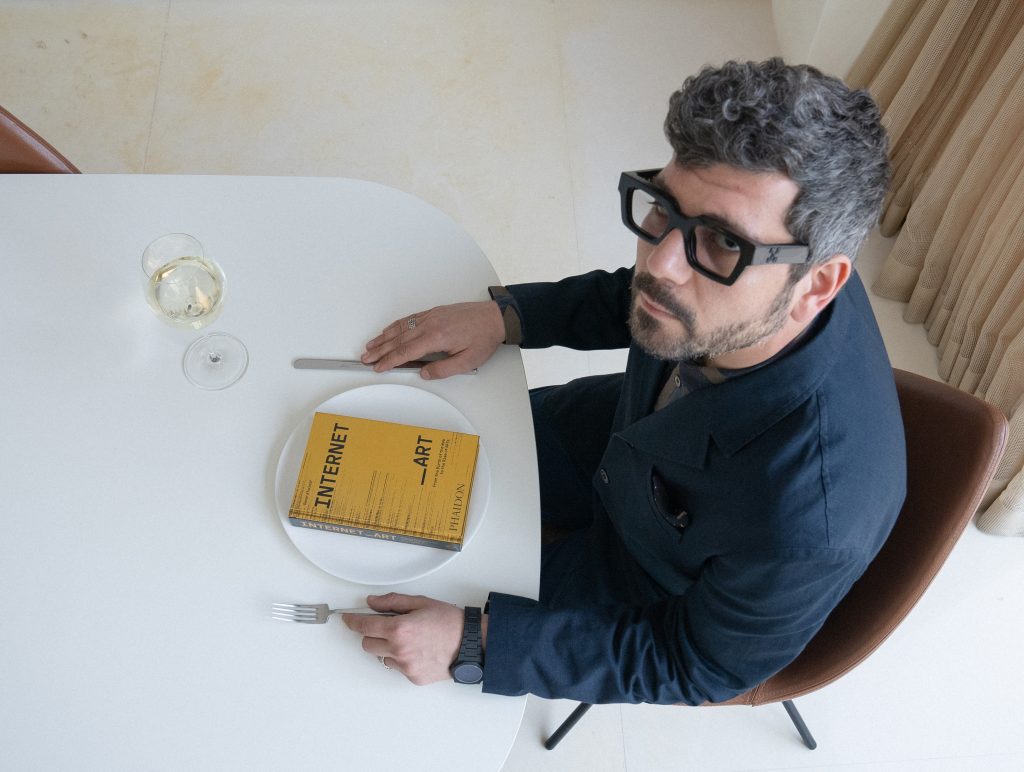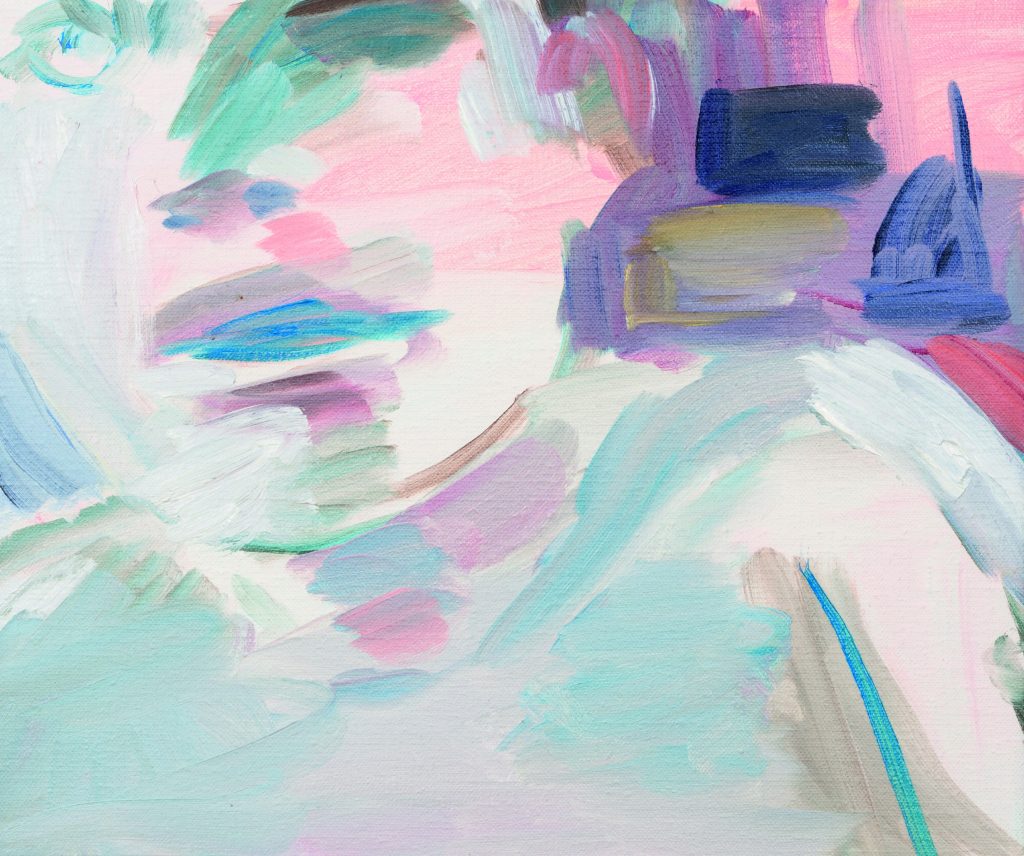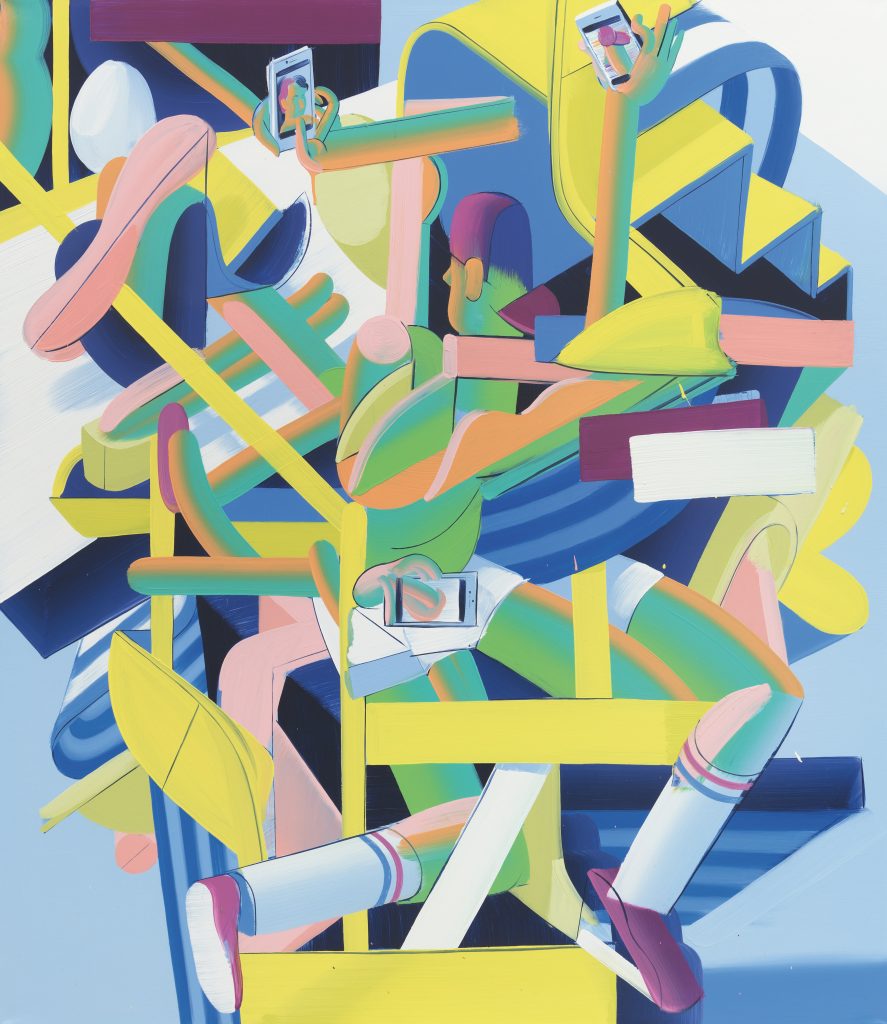Books
‘Pictures Want to Be Kissed’: Author and Curator Omar Kholeif on Dating Apps, Digital Artifice, and Visual Constructions of Desire
Read an excerpt from Sharjah Art Foundation curator Omar Kholeif's new book 'Internet Art.'

Read an excerpt from Sharjah Art Foundation curator Omar Kholeif's new book 'Internet Art.'

Omar Kholeif

The following essay has been adapted from the new book Internet_Art by Omar Kholeif (Phaidon, 2023), originally published under the title “Curated Desire, Curating Bodies: Everywhere All the Time.”
Kholeif is collections director and senior curator at the Sharjah Art Foundation, UAE, as well as an author, broadcaster, and the avatar of Dr. O—a polymath who lives in the metaverse. A leading commentator on art and digital culture, Kholeif is the author of dozens of books, a curator of more than 60 exhibitions, and the founder of artpost21.com, which supports art and social justice in the age of the “meta” metaverse.
The sense of intimacy—and alienation—that has emerged since the advent of online dating forums has been the subject of much discussion. From Tinder to Hinge, desire is now reduced to a checklist of predetermined factors, aspirational shopping lists of elusive amorous companions. On the other side of this are websites, such as Chatrandom, which became a point of obsession for the painter Celia Hempton. In her series “Chat Random” (2014–ongoing), the artist logs onto the website, where she encounters anonymous strangers whom she seeks to engage as models for her portraits. Her online meetings—with men in search of physical connection, as well as trans women—wheel the artist around the contours of the globe. Through an informal invitation, Hempton initiates her process, painting the portrait of each subject on a canvas, often no larger than the size of a laptop screen. The result is a performative suite of works most often formed of gestural brushstrokes. Once the man in question clicks on the screen to the next person, the artist’s process grinds to a halt. The finished work is an intimate snapshot into an unambiguous moment that could only be embodied in the act of engaging through a networked computer.
I first installed a suite of these paintings in “Electronic Superhighway (2016–1966)” at the Whitechapel Gallery, London. Clustered on a table, they began to resemble open windows on a computer screen. I chose to install them as if they were multiplying chat boxes, desirous conversations accumulating into an archive of wanton intimacies. These were experiences suspended in time, never to be completely realized. Despite the alienation of the mysterious platform Chatrandom, Hempton’s paintings summon different emotions. They are studies of vulnerability, intimacy detailed by a stranger, and the abnormalities of bodies in places near and far.

Celia Hempton, Misha, Odessa, Ukraine, 8th July 2014 (2014). Courtesy of the artist and Southard Reid.
The subject of online dating rooms and applications has occupied the visual field for nearly two decades. At the 2011 Venice Biennale, artist Frances Stark became the subject of much discussion for her video work My Best Thing (2011). Here, sensual webcam conversations revolving around the subject of “cam sex” with Italian strangers were collected into an unassuming animation, embodying a conception of a virtual Adam and Eve. The topic of interactive romance has also been the subject of myriad fictive interventions. In 2008, I came across Ann Hirsch’s Scandalishious (2008–9), an 18-month performance on YouTube where the artist assumed the persona of Caroline, a self-aware college freshman whose sexualized dancing and video blogs attracted an interactive cohort who created responsive videos and commentary. The work revealed how satire could animate a world of minor celebrity—Andy Warhol’s 15 minutes of fame stretched out over months.
The most well-known example of such performative acts is Amalia Ulman’s Excellences & Perfections (2014). A post on Instagram from April of that year began the project, in which Ulman took on the role of a fictional character with her own narrative. Her persona was consumed with a desire for physical augmentation and obsessed with extreme makeover culture. By the final post of the project on September 19, 2014, she had attracted 88,906 followers. Whether directly pointed against the Kim Kardashians of the world or not, the sardonic performance generated forms of feedback similar to those that might be directed at such a reality T.V. star. Aspirational messages from devoted followers gave way to abusive judgments, produced from nothing more than the selfies posted online. To answer the question posed by art historian W.J.T. Mitchell’s book What Do Pictures Want? (2005), pictures want to be kissed. The image, as Ulman reveals, creates its own self-contained world, which summons and reveals the expectations of real-world society. Insecurity, chauvinism, and sexism are rife in the digital sphere, concealed behind the made-up names of internet users.

Andrew Holmquist, Fuckboy (2018). Courtesy the artist and Carrie Secrist Gallery. Photo: Anna Olthoff.
I was enthralled by how these female artists fashioned alternative routes that existed against the linear narratives of online dating and the manufactured image production that it engenders in the visual sphere. I exhibited these works, while also searching for male perspectives, whether cis male or otherwise. Braving the icy streets of Berlin in 2018, I met up with queer artist Andrew Holmquist. I was eager to catch up with him about the newfound life he had fashioned in Berlin, having moved there from Chicago. Speaking in angsty sound bites, the artist expressed a deep-seated frustration with the archetypal nature of gay male representation. We discussed the prototypes that had emerged from the male dating apps Grindr and Scruff—the tribal affinities, the sexualized notion of visual representation, which had to be made manifest through tiny square boxes on a smartphone. Holmquist’s frustration was manifesting in his gestural, abstract action paintings. One of these forays was Fuckboy (2018), which featured an intertwined cornucopia of bodies, each holding a cell phone up in the inevitable and essential act of self-capture.
Three years later, Holmquist and I sit in his car waiting for my immigration appointment at a center in downtown Los Angeles, where he has relocated with his partner. He tells me that Fuckboy was about a kind of “new toxic masculinity,” a form of longing constructed out of digital artifice. The accumulating bodies within his colorful canvas simultaneously represent a loss of the individual in favor of a construction of identity that is manicured to the contours of instantaneous capitalist desire. I pondered the artist’s words as I sat spinning my wedding ring—an emblem of a relationship suspended between life and death.
As I stared at the life-size images, I became subsumed, disappearing into their worlds, only to stand back and catch my breath, realizing the illusion. Looking at these pictures extends beyond the subject and object to involve the viewer, who ascends into an almost psychedelic state of consciousness. Perhaps it is the fictional gaze constructed by such artists as Laurie Simmons—a gaze that is as adaptive as it is critical—that holds the potential to enable us to locate, not only our bodies, but equally, our sense of self and that which it so deeply desires.
Excerpted from Internet_Art: From the Birth of the Web to the Rise of NFTs © 2023 by Omar Kholeif. Reproduced by permission of Phaidon. All rights reserved.